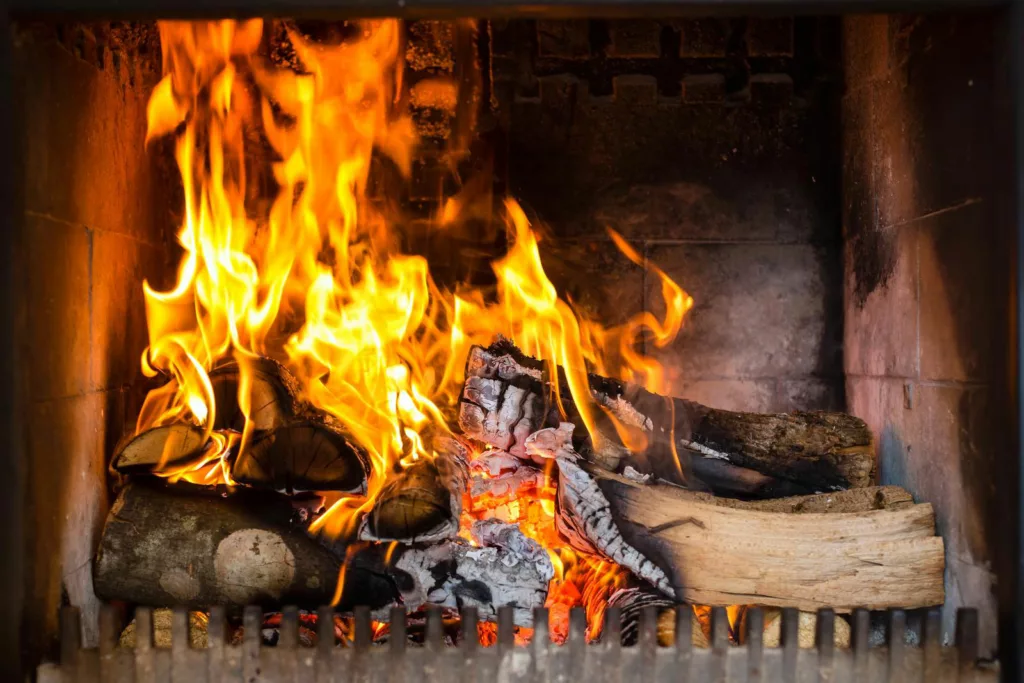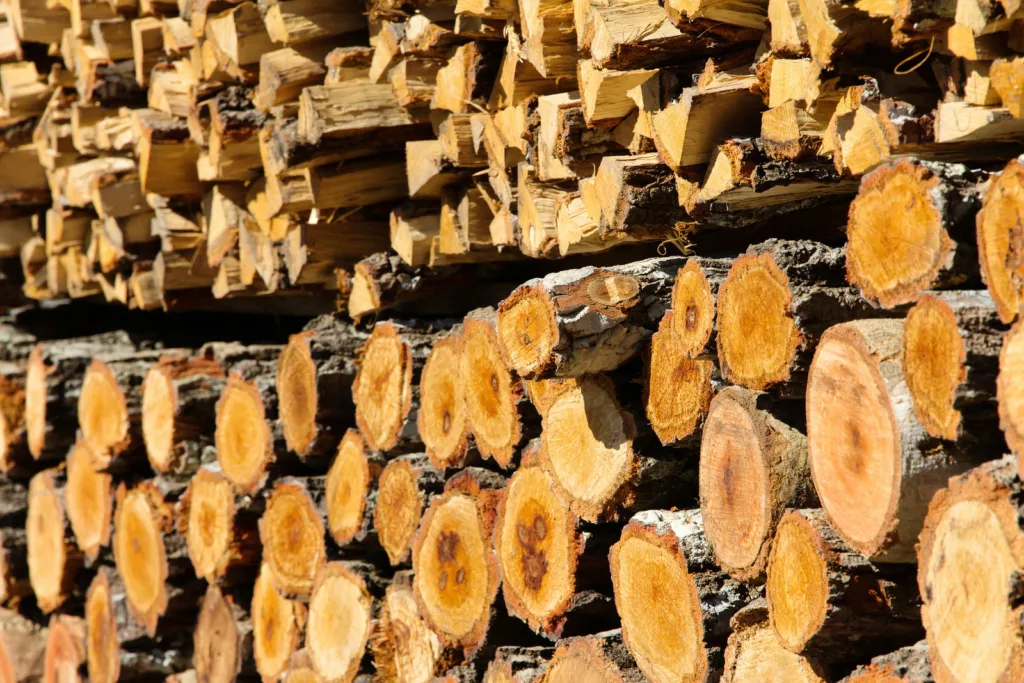Oak and Ash are two of the most widely-used firewood in households. They are both dense hardwoods; hence, they burn pretty hotly.
However, they differ in aroma, burn time, and heat output. Therefore, if you are looking for which is better, you will be interested in this “oak vs. ash firewood” debate
Oak is denser than Ash. It has a BTU of 30.7 million, while Ash has a BTU of 24.2 million (white Ash) or 20 million (green Ash).
When it comes to seasoning, oak seasons in 12-24 months; on the other hand, Ash is typically ready to use in 6-12 months.
In this article, you will learn the pros and cons of using either type of firewood and which is better.
Oak Firewood Burn Qualities
Oak firewood is abundant in North America. It is a dense hardwood with a high heat output and a long burn time.
Before deciding to go for oak, have a look at this oak firewood burn qualities to help you choose;
- Heat Output
Oak comes in different species. Hence, the BTU (British Thermal Unit) varies by species. For instance, while red oak has a BTU of 24.6 million, white oak produces 29.1 million BTU. Gamble burns the hottest with 30.7 million BTU.
- Smoke
Oak is ideal for firewood because it produces little to no smoke. As long as it is well-seasoned, oak makes good firewood for your chimney or wood stove.
Ease of Splitting
Oak is easy to split when wet or fresh. As it seasons, however, it may get challenging. The oak species also determine how easy or difficult it may be to split. For instance, red oak is generally harder to break than white oak.
- Sparks
Another great feature that makes oak highly coveted as firewood is that it hardly produces sparks. Unlike osage orange or mulberry, oak is a safe wood. This feature makes oak firewood suitable for indoor use.
- Aroma
Oak does not rank high on the “best-smelling firewood” scale. Red oak, for instance, has an unpleasant smell. White oak, however, has a mild, sweet scent like hickory. Some say it smells like vanilla; others say it has a “campfire-ish” aroma.
- Coaling
If you are looking for firewood that can keep you warm all night, you must choose one with good cooling properties. Oak has good coating properties that allow it to burn hot for a long time.
- Creosote Build-up
Creosote is a soot or tar-like substance that forms by burning firewood. Aside from clogging up and discoloring your chimney, it can lead to health problems. Fortunately, as long as oak is well-seasoned, it does not lead to creosote build-up.

(Kindling Firewood)
Ash Firewood Burn Qualities
Ash is lighter and less dense than oak. However, like oak, it also burns hot and clean. Ash has a BTU of 20-24 million, depending on the species.
Below are the burn qualities of Ash;
- Heat Output
As previously stated, Ash has a lower BTU than oak; hence, it does not produce as much heat. Green Ash has 20.0 million BTU per cord. White Ash, denser than green Ash, produces 24.2 million BTU.
Smoke
Ash makes good firewood because it does not make a lot of smoke. However, properly season your ashwood before throwing it in the fire. If it is not well-dried before burning, it will produce smoke.
- Ease of Splitting
White Ash is denser and heavier than green Ash; this makes it more challenging to split. With a hatchet and little effort, you can easily break a cord of green Ash. However, you will need a splitting axe or maul to split white Ash.
- Spark
Firewoods that produce too many fireworks are not ideal, especially for indoor fires. Thankfully, Ash rarely sparks while burning. It burns clean as long as it is dry and well-seasoned.
- Aroma
If you want to make a sweet-smelling fire, Ash is not an ideal choice. Although it does not have an intense or unpleasant aroma, it does not smell like roses. Its aroma is mild, making it perfect for indoor and campfires.
Coaling
As you may already know, firewood with good coaling will burn longer. Although not as good as oak or maple, Ash does well with coaling. This feature allows you to relight the fire easily by tossing in a few logs.
- Creosote Build-up
Like oak, Ash does not influence creosote build-up like pine or fir. It is a clean-burning firewood. Hence, you do not need to worry about clogging your chimney or getting sick from creosote.

(Stack of dried firewood)
Tips For Seasoning Oak and Ash
To season wood means to dry it until its moisture content is down to a level suitable for burning. For oak, seasoning time is 12-24 months. For Ash, it takes only 6-12 months. If you live in a place with a hot and dry climate, then seasoning time reduces as a result.
If not, follow the tips below to season oak or Ash;
Oak
To speed up seasoning time, you must learn to stack oak properly. Stack your wood off the ground with small pieces of wood between the larger pieces. Also, leave the sides open so that air can circulate. Use a firewood rack with a cover or a tarp to protect your oak against rain or snow.
Also, use a criss-cross pattern when stacking. It would take up more space, but placing your wood in opposing directions allows for better air circulation.
Additionally, use a chainsaw to rough-cut pieces of the wood. Then, with an axe, split the parts into desired thicknesses to allow wind and sun exposure. The more wind and sun your wood can get, the faster it will season.
Ash
Since Ash is lighter than oak, it will season more quicker. However, you must play your part in the seasoning process. Seasoning Ash is similar to seasoning oak; proper storing and stacking are key.
The wood should always be off the ground and covered with a tarp. If you wrap it with a tarp, open it a few times to avoid mold growth on your wood.
Leave the sides open to allow ventilation. Space out the stacking rows using a 3 to the 5-inch spacing between each log. Also, to accelerate the process split the firewood into smaller logs. Doing this will give it even better sun and wind exposure.

(Furnace with flames)
How To Identify Ash or Oak Wood?
Several features distinguish oak from Ash. Leaves, bark, and acorn are a few ways to identify the two kinds of wood.
Below is a detailed explanation to help you easily understand oak or ash wood.
Oak
You can quickly identify oak trees by looking at the leaves, acorns, bark, and end grain. The leaves are usually smooth or slightly hairy and have a lobed edge.
Oaktree acorns have a unique cup-like shape and grow in tight clusters with a light brown or grey bark.
Ash
Ash trees are identifiable by their distinctive leaf shape. Green and white Ash have compound leaves consisting of 7 to 9 leaflets.
Blue Ash, another species, has about 7 to 11 leaflets arranged evenly along the stem. These leaflets have a pointed tip and are oval-shaped.
Mature ash trees have a gray bark, while younger trees have a purplish-brown bark. If the bark is grown, you can also check for the diamond-shaped ridges peculiar to ash trees.
Pros and Cons of Using Oak or Ash As Firewood
Nothing is perfect. While oak and Ash are good choices for firewood, they both have upsides and downsides. Before deciding which to use, it is crucial to learn their pros and cons.
Here are the pros and cons of using oak for firewood;
Pros
- Oak is widely available in North America.
- It has a high BTU. Therefore, it makes long-lasting fires
- It has good cooling properties
- It does not smoke or spark
- Oak burns clean
Cons
- Red oak has an unpleasant smell
- White oak is hard to split
- It has a long seasoning time (12-24 months)
Below are the pros and cons of using Ash for firewood;
Pros
- Ash is easy to split
- It does not lead to creosote build-up
- Does not smoke or spark
- It has “okay” coaling properties
Cons
- Green Ash has a low BTU
- It does not burn as long as oak
- It does not have any aroma

(Well-stacked firewood)
Conclusion
In the end, oak wins the “oak vs. ash firewood” contest. It burns hotter and longer, making it ideal for indoor and outdoor fires. Ash also makes decent fires and wins oak when it comes to ease of splitting.
Since Ash is lighter than oak, it is easier to light. Hence, you can harness the strengths of both kinds of wood by starting the fire with Ash and adding oak logs. This way, your fires will burn hotter and for longer.
